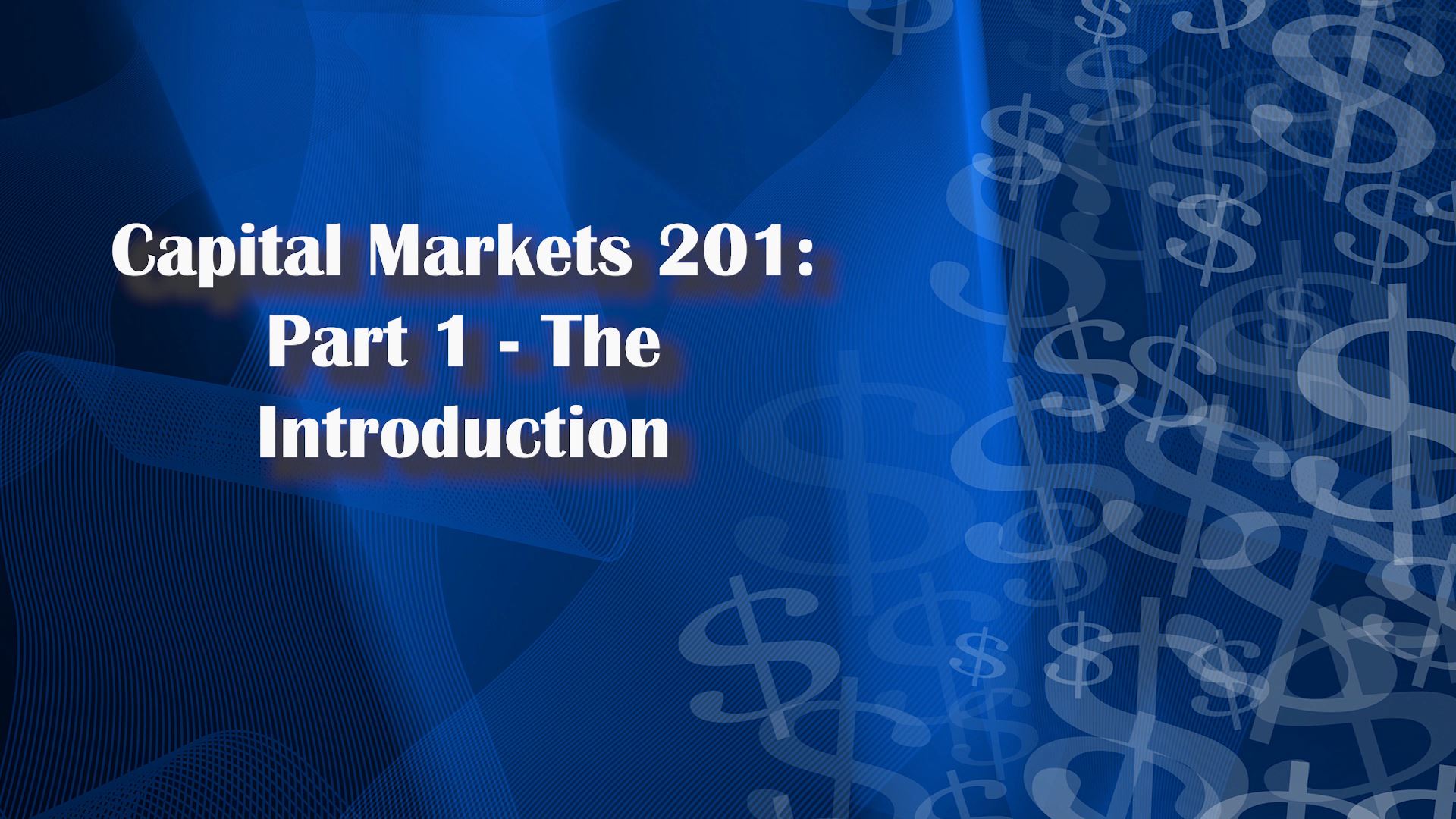Welcome to the first in a new series of videos and posts in which we discuss the capital markets. It’s important to understand how these markets work because they are such a large element in the financial system, with bonds and other funding instruments, and the mix of derivatives together dominating the markets – and by the way, the risks in the system too. As you will know from our earlier posts, the total value of derivatives in the system globally dwarfs the value of the real economy.
You might like to know that I spent a number of years working in a major bank where I taught capital markets to their senior executives, because they had been subject to a major financial crash during which it became clear that the senior executives in the company had NO idea about how the markets really worked, and the inherent risks which they were taking. Some would say little has changed.
In this introduction I will discuss what we are going to explore in the series, over the weeks ahead. I am not assuming any prior knowledge of the topic in these shows, so we will start out quite simply, but by the end of the series we will be touching on some really complex, yet interesting concepts. So do come along for the ride. And I should explain that I called the series “Capital Markets 201” because this is going to be more, much more than a simple 101 overview.
So today, to start, I am going to outline the structure of the series and offer a definition of “Capital Markets”.
The capital markets are simply a market place where buyers and sellers engage in the trade of financial securities like bonds, stocks, and other instruments. This buying/selling may be undertaken by participants as diverse as banks, other financial institutions, companies, government entities and even individuals. The market may exist within a country, and internationally, with the bulk of the transactions relating to Australia for example, being off-shore.
These markets help to channel surplus funds from savers to institutions which then invest them, and many of these trades are in longer-term securities, though as we will see later sort-term funding and also a complex set of derivatives are also important in the sector.
Finally, capital market consists of primary markets and secondary markets. Primary markets deal with trade of new issues of stocks and bonds, and other securities, whereas secondary markets deals with the exchange of existing or previously-issued securities. Another important division in the capital market is made on the basis of the nature of security traded, i.e. stock market and bond market.
Finally, as well as trading in the underlying securities there are many flavours of derivative. A derivative is a contract between two parties which derives its value/price from an underlying asset. The most common types of derivatives are futures, options, forwards and swaps. Generally stocks, bonds, currency, commodities and interest rates form the underlying asset.
So to the structure of our series of programmes.
We are going to start in the next video with the concept of the time value of money. It’s essential to understand that capital markets are essentially all about manipulating cash flows. So we need to know about how to assess cash flows, and develop some basic language to describe them. We will also touch on concepts such as compound interest, current and future value, and internal rates of return.
Next we will look at the treasury operations in banks and other large corporations, and discuss the concept of disintermediation, where companies behave like banks in their own right. We will also meet archetypical “Belgium Dentists” and where they put their money.
After that, we will start looking at the individual instruments which make up the Capital Markets armoury. So we will look at bonds and other funding instruments, and how they work, and the different flavours which are out there. These instruments are the bedrock of the capital markets, so we will look at who might buy and sell such instruments.
Once we understand how bonds work, we can then start to explore the more complex derivatives areas of the capital markets.
We will look at futures and options contracts and how they work. This is a big area and we will look at both contracts relating to physical commodities like corn and pork bellies as well as financial contracts.
We will take a deep dive into interest rate and currency swaps and options, an area which I find really interesting. And there are a number of other variants which we will also touch on.
Then towards the end of the series we will start looking at financial engineering, where these various products are put to work. I will look for example at securitisation (I was involved in some of the early transactions in the 1990’s).
And as we bring the series to a close we will look at the risks in the system, the way the markets are regulated, or not, and some of the gaps in reporting and disclosure.
So buckle up, and enjoy the ride. And by the way, I will run a couple of live Q&A events as we progress through the series, and I will also try and answer questions as we go though, so do post any you may have.
Watch out for the next episode – The Time Value of Money – coming soon.
And by the way, if you value the content we produce please do consider joining our Patreon programme, where you can support our ability to continue to make great content. Here is the link, and it’s in the comments below.

